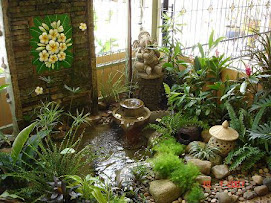The Wildlife Garden by Marion Aston
Keeping your garden free of harmful chemicals gives you a head start in attracting wildlife and, with a little planning, you can create a habitat that will welcome a diverse range of creatures. The visitors, in turn, will repay you by acting as predators, helping to control the level of problem-causing pests in your garden. Knowing that your patch is providing a haven for wildlife will give you a closer connection with the natural world. Just to be able to watch birds feeding can lift the spirits and improve your sense of wellbeing.
Encouraging natural cycles in your garden will promote biodiversity. The more soil life there is, the more insects will come to feed on it. Birds will come to feed on the insects, as will all amphibians and mammals. In this way, food webs will gradually recover in the absence of pesticides.
Making your own garden compost instead of using peat, for instance, prevents damage to a fragile habitat that cannot be re-created. Collecting rain water and using this in the garden will reduce the consumption of mains water. Huge amounts of energy are wasted on cleaning and transporting the precious resource and it is often extracted from rivers at levels that threaten the local wildlife.
Much of the wildlife that thrives in a garden does so under the care of a gardener who is not unduly tidy. The best wildlife gardens leave room for decay. This approach involves piling up old logs and autumn leaves in a quiet shady corner to create a home for insects and hibernating hedgehogs. Log piles can also be over-planted with ivy to enhance both their appearance and attractiveness to insects such as stage beetles.
Consider planting native trees, shrubs and flowers so that native creatures will have a familiar food source or nesting site. Plant as many suitable flowers as possible to attract bees, butterflies and other insects that will enhance your wildlife garden. Many beneficial species are attracted to a garden that is effectively a feeding station for them. For the larger visitors, such as small mammals and birds, you can plant flowering and berrying trees and shrubs.
Ponds provide a rich habitat for a variety of wildlife. Many familiar creatures, such as frogs, toads, newts and dragonflies depend upon ponds to breed. Many urban gardens have become havens for these creatures. Even a small pool will provide somewhere that birds and other visitors can come to drink. If you have no space for a pond, try introducing a suitable container that can be utilized as a drinking or bathing area for birds, mammals and even insects.
Just leaving the lawn uncut for a few weeks in mid-summer will give many of the plants you do not normally see the opportunity to flower. An area of longer grass also benefits butterflies, moths and many other insects species by providing food and shelter. Many of these insects will fall prey to larger garden occupants such as songbirds and hedgehogs, so diversifying and enhancing the food web in the garden.
The barriers and structures in your garden also provide very useful habitats. Hedges are a sanctuary for all sorts of wildlife, where they can breed, feed and take shelter. The hedges are easy to maintain, as they should only be cut once in the winter to avoid interfering with nesting birds in spring and summer. Dry stone walls are another garden feature that can provide homes for hibernating amphibians, lizards, insects and bees.
If you have a few trees in your garden you could try to recreate a woodland habitat. Choose plants that mimic a woodland floor: bluebells, anemones and sorrel are just a few of the plants that will thrive in these conditions. Planting a few small shrubs that will grown below the trees, such as holly and hazel will complete the effect and may well tempt the more shy woodland birds into your garden. Try putting up a few bird or bat nest boxes and providing nesting areas for insects and mammals. The greater the year-round diversity, the more useful your garden will be.
About the Author
Marion Aston maintains a gardening website at http://www.gardeningdelight.co.uk
Arrticle source : www.goarticles.com/



No comments:
Post a Comment